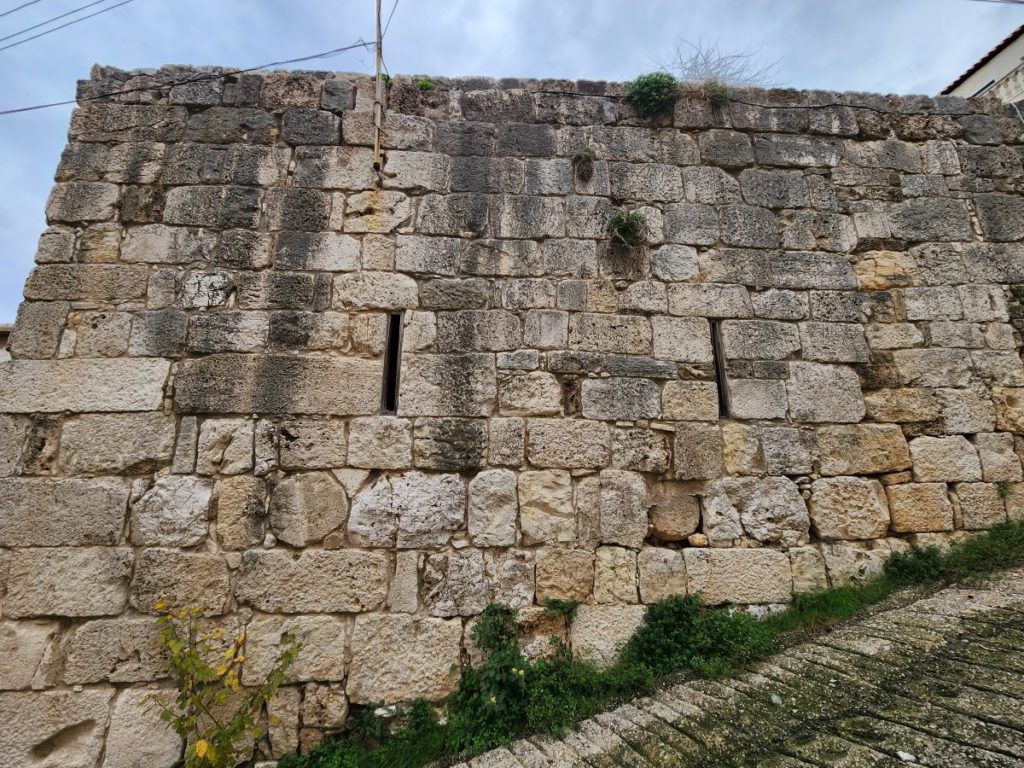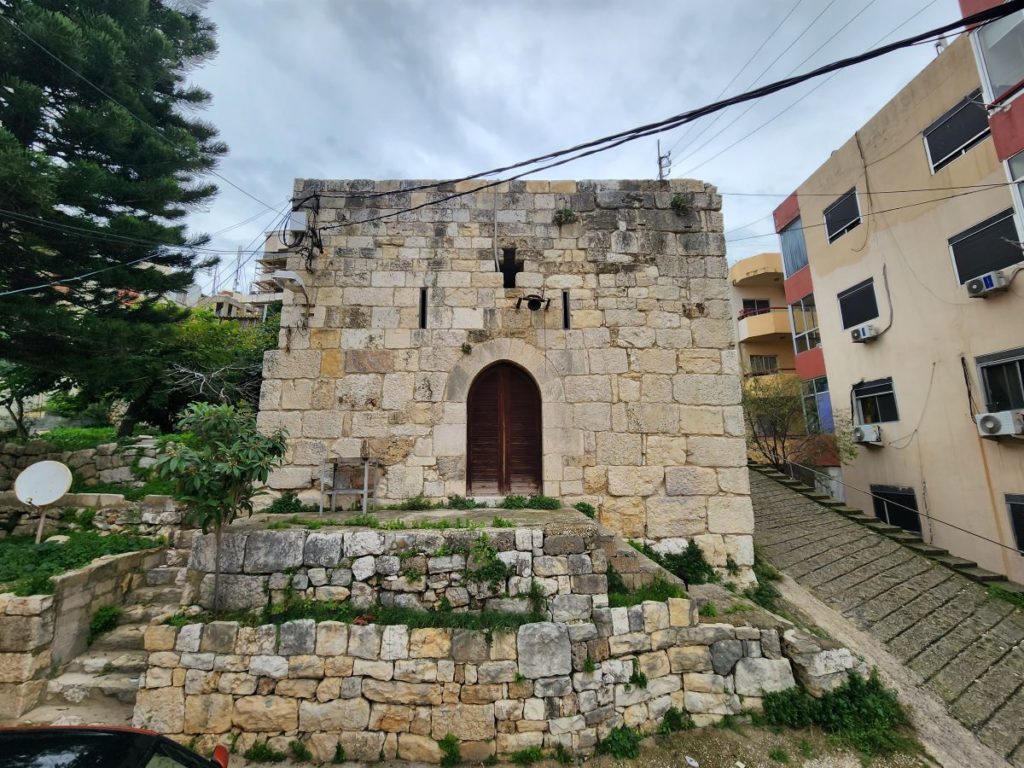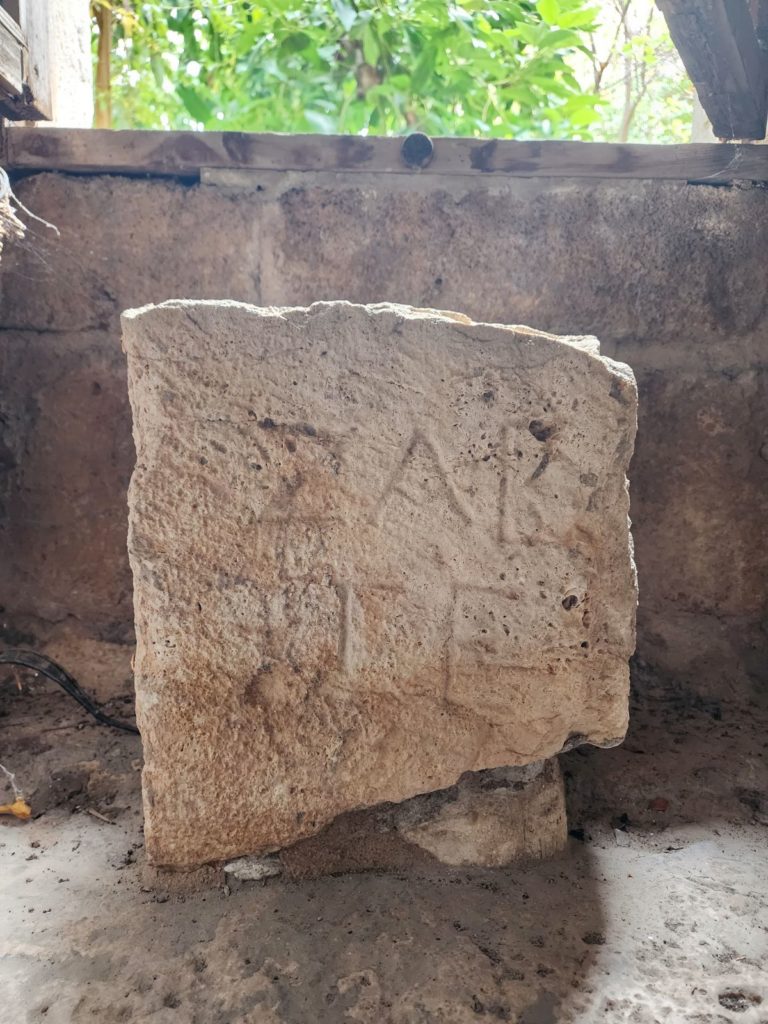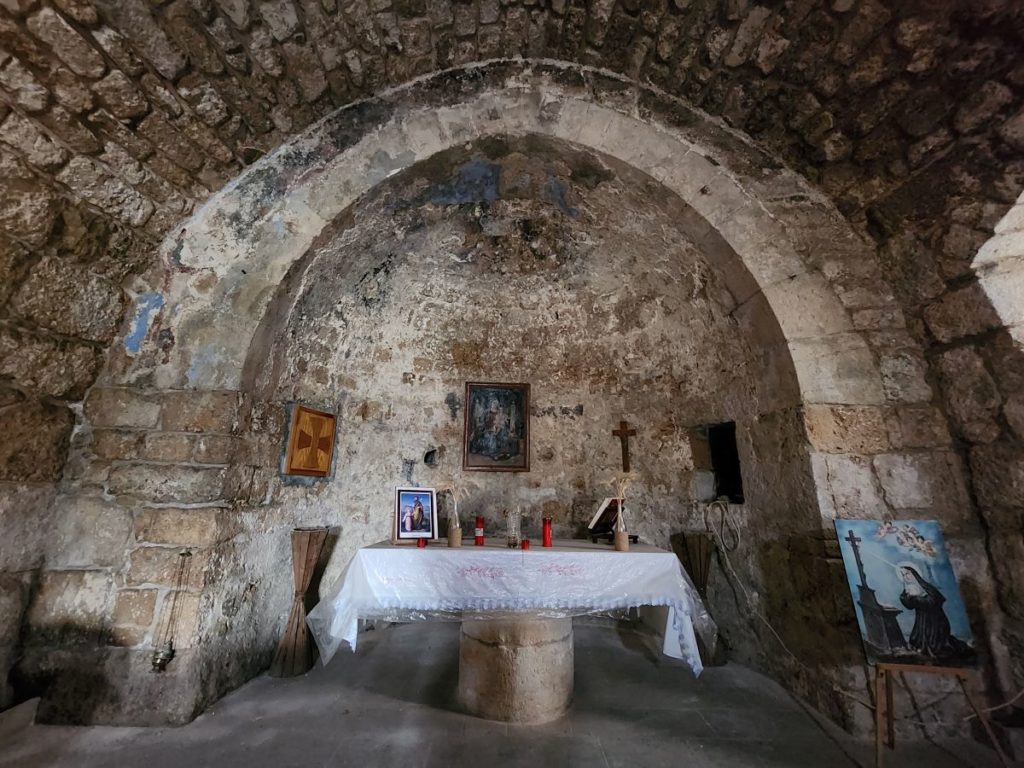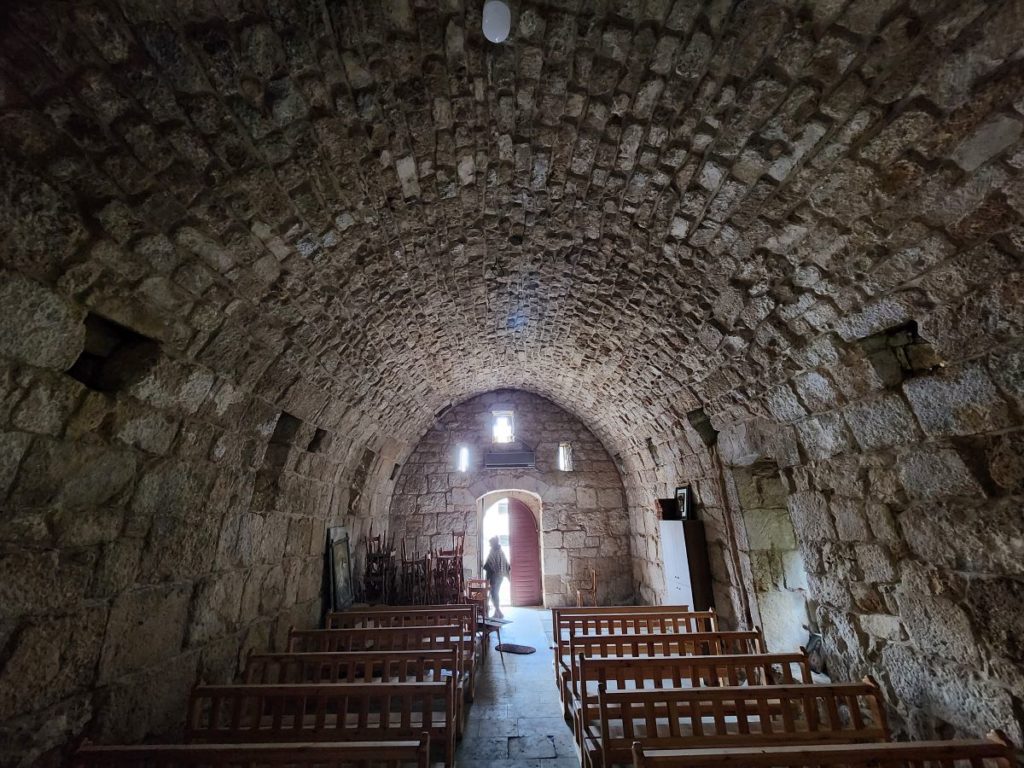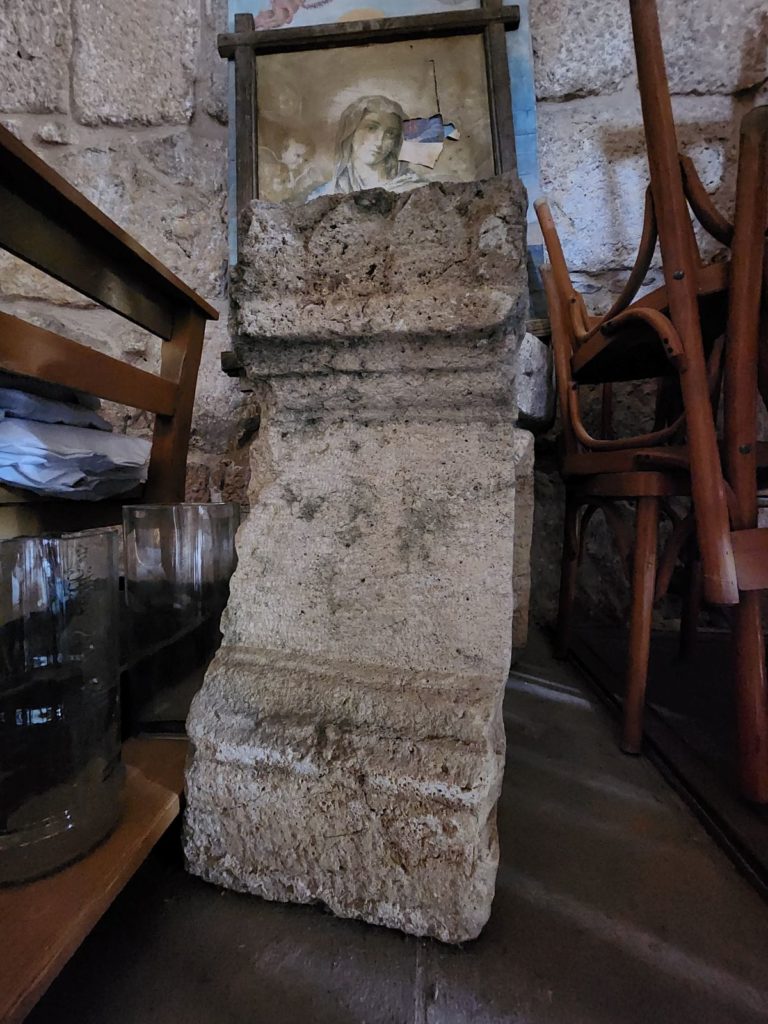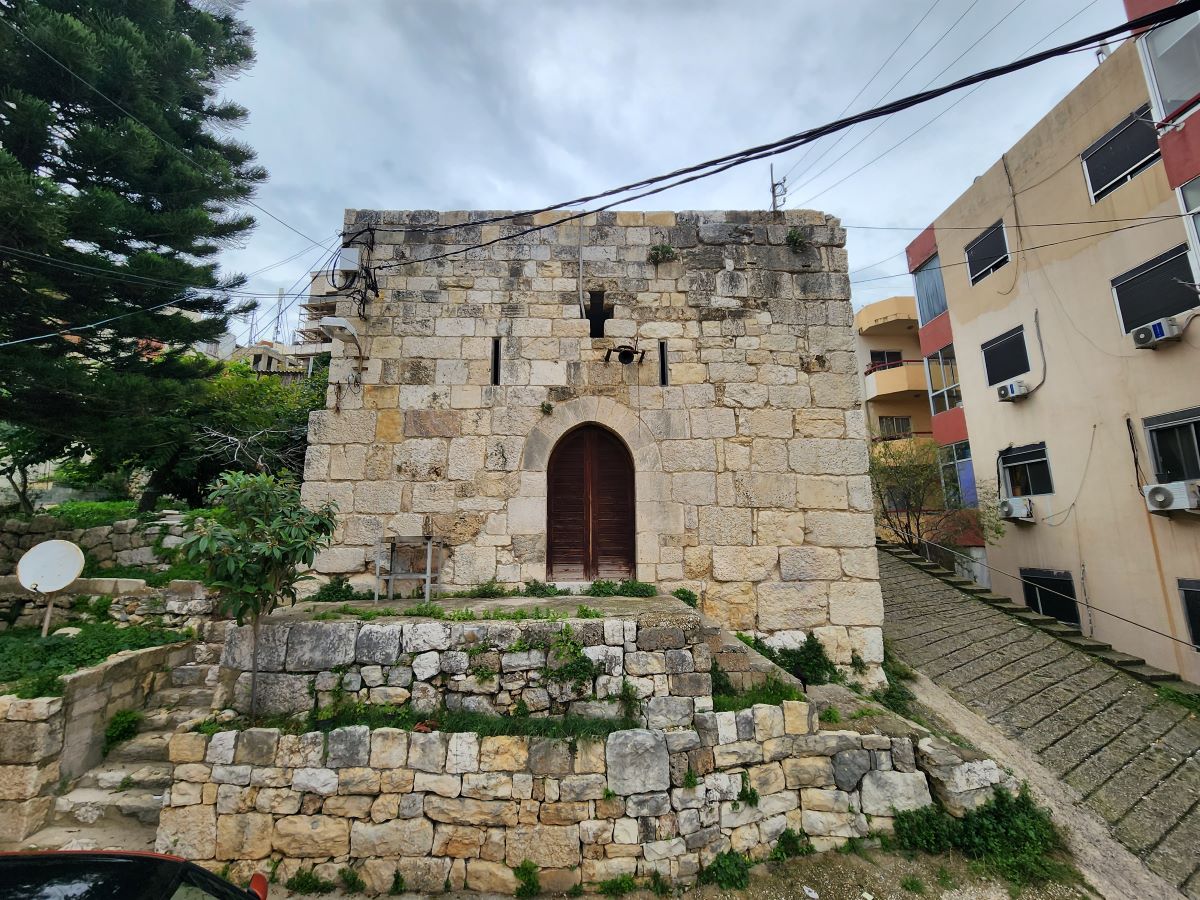The village of Kassuba features a Medieval era church, built on top a Roman-era temple as the structural elements suggest it.
The church is taken care of by the Abi Chebel family who are happy to hand over the key to visitors.
Structure
The chapel has undergone multiple construction phases throughout its history. However, unfortunately, none of these phases have been adequately documented.
It has a rectangular structure, which sections of its walls incorporates stones and columns of a temple. Two additional elements attest to the presence of a temple prior the church’s construction: a votive altar and an Greek inscription with no clear translation to-date.
The main entrance to the church is located on the western wall, accessible through a door with a pointed arch. Above the entrance, there are two loophole windows and an opening in the form of a cross, probably dating back to the Crusader era.
Interiorly, the church is characterized by a single nave that ends in a round horseshoe-shaped apse, which was decorated with medieval era frescoes. On the south wall, there are two loophole windows and a more recent rectangular opening. The north wall has a door that leads three steps down to the chapel floor.
Restoration
The chapel restoration project commenced by addressing the unstable walls that were at risk of collapsing due to excavation work conducted for a nearby road and the damage caused by digging graves within the structure. The first step involved consolidating the walls to ensure their stability. As the restoration progressed, the interior walls’ plaster lining was delicately removed, unveiling a remarkable discovery – several frescoes that had been left in situ, though barely visible.
Karim Sokhn
Tour Operator and Tour Guide
Reference:
Handbook – Byblos, everything you ever wanted to know, Archaeology and history in the Lebanon
